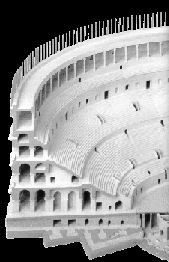
AT272 Ancient and medieval cities: a technological history
May - July 2007
CONTENTS
1 The Near East
1.1 Introduction
1.2 The emergence of cities: a technological revolution?
1.3 The emergence of cities: a social revolution?
1.4 Technology and city-building in Mesopotamia
1.5 Egypt: a civilization without cities?
1.6 Conclusion
Extracts
2 Greece
2.1 Urbanization in the Aegean region
2.2 Greece
2.3 Greek urban planning and morphology
2.4 Greek technologies and city-building
2.5 Athens
2.6 Conclusion
Extract
3 Rome
3.1 The pattern of Roman urbanization
3.2 Roman urban planning and morphology
3.3 Technology and Roman city-building
3.4 Rome: building the metropolis
3.5 Conclusion
4 Medieval cities
4.1 The barbarian invasions and the fate of cities
4.2 Cities of Islam
4.3 Urban revival of the Latin West
4.4 The urban stimulus to medieval technology
4.5 Town and country
Extract
Back to OU

**** Result ****
Amazingly, I got a Grade 2 pass, which I'm surprised about because I did the 3 little essays before we went on holiday, intending to change them (radically!) when we got back - but I didn't ... couldn't be bothered and figured it was enough for a bare pass...
One of the most fundamental developments in human history is the transition from rural to urban ways of living: this course deals with its technological dimension, which some historians have seen as all-important. The main focus, though not an exclusive one, is on the contribution of technologies to the physical form and fabric of ancient and medieval towns and cities. You will discover through your study of these technological and urban variables how civilisations and societies can be characterised both by their use of certain complexes of technologies, and also by the peculiar political, social and economic pathways through which the potentials of these technologies are channelled and shaped. Your understanding of these broad issues and historians’ interpretations of them is developed by case-studies of technologies in particular urban settings provided in the audio-visual materials, and in the Reader associated with the course textbook.